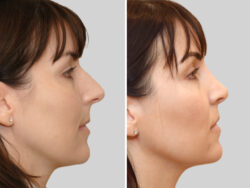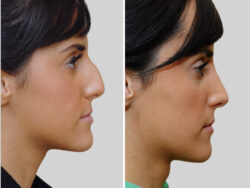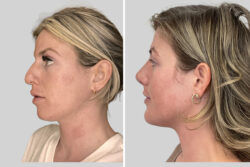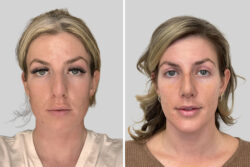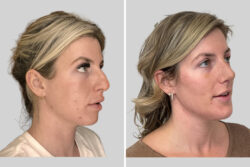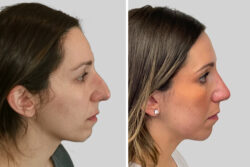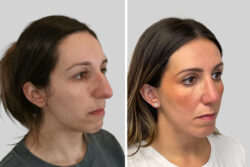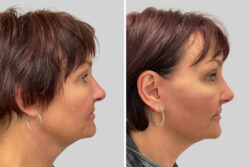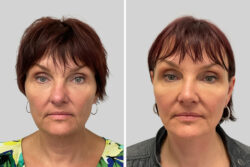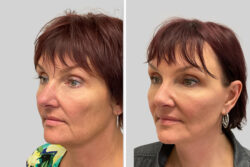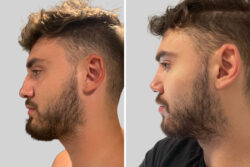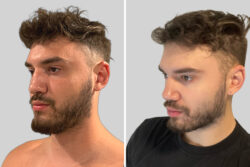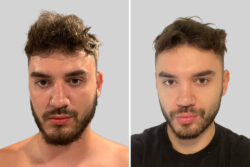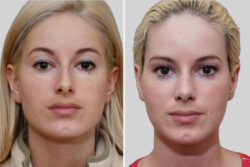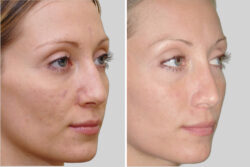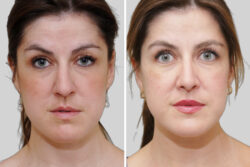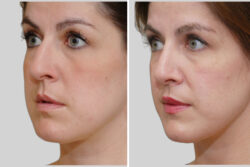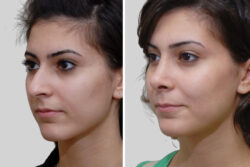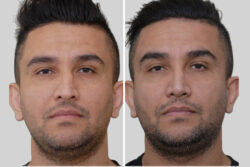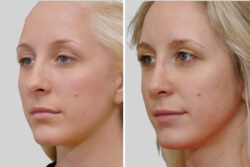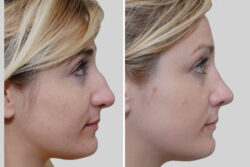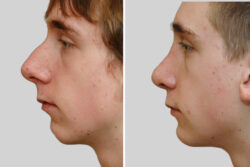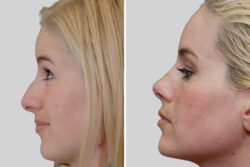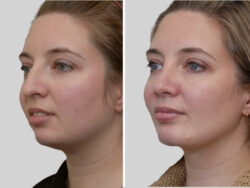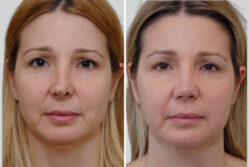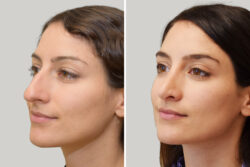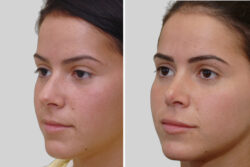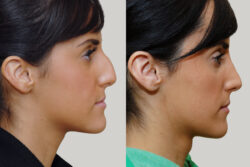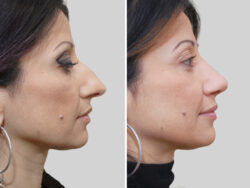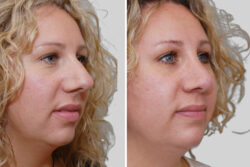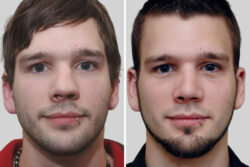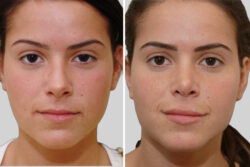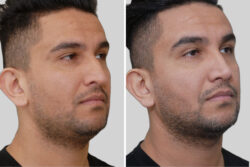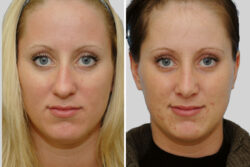Making the face as attractive as possible allows for an individual to have an increased sense of self-esteem, and affects how the individual is viewed by the world. With the nose being the focal point of the face, nose surgery (medically termed Rhinoplasty), is becoming increasingly more popular. Nose jobs are often necessary to improve one’s cosmetic appearance, as well as to correct breathing problems and/or facial disfigurement.
Before undergoing Rhinoplasty, two factors must be weighed.
The first is the type of Rhinoplasty the individual would benefit from most to achieve their desired outcome. A Closed Rhinoplasty requires almost an invisible incision that is made inside the nostril. This reduces the scarring and recovery time and is commonly used in cases where the amount of reshaping required is small. An Open Rhinoplasty is used for more complex procedures and is done using both an internal and external incision to the structure of tissue that is located between the nostrils, known as the columella.
A second factor to be considered is the age of the patient. While many younger people are eager to correct what they see as an unattractive nose, an x-ray may be required to determine whether the individual’s bones have reached full maturity.
The surgery generally takes about three hours and the patient is sent home the same day with a padded cast over the nose to protect it while it heals.
Medication is prescribed to reduce pain and discomfort during the recovery period. Dissolving sutures are used for the internal incisions so that there is no need to remove them. Non-dissolving miniature sutures are used for the external incision. If packing has been placed in the nostril to reduce bleeding, these are normally removed during the post-surgery examination which normally takes place two days after surgery. Nasal sprays are usually prescribed to reduce swelling and to ease breathing and to prevent infection.
Individuals undergoing a nose job are often concerned about the increase in the swelling of the nose and the area around the eyes, but this is normal and it subsides by about 80% within two weeks. At this time patients are able to see the change in the shape of the nose. The remaining swelling will disappear within 9 to 12 months as the body absorbs the excess fluid buildup which is normal after a nose job.
Rhinoplasty when done by a qualified cosmetic surgeon is a safe procedure and the patient is able to resume normal activities within a day or two, although the obvious physical signs of having undergone the procedure will be visible for several more days. In most cases one procedure is all that is need to achieve the desired look and only a small number of all patients may have to undergo revision surgery to achieve the desired nose or to correct any problems arising out of the initial surgery.
The aim of Rhinoplasty is to enable the patient to reshape the nose to achieve the appearance he or she desires. The benefits of the procedure outweigh the few days of discomfort involved.
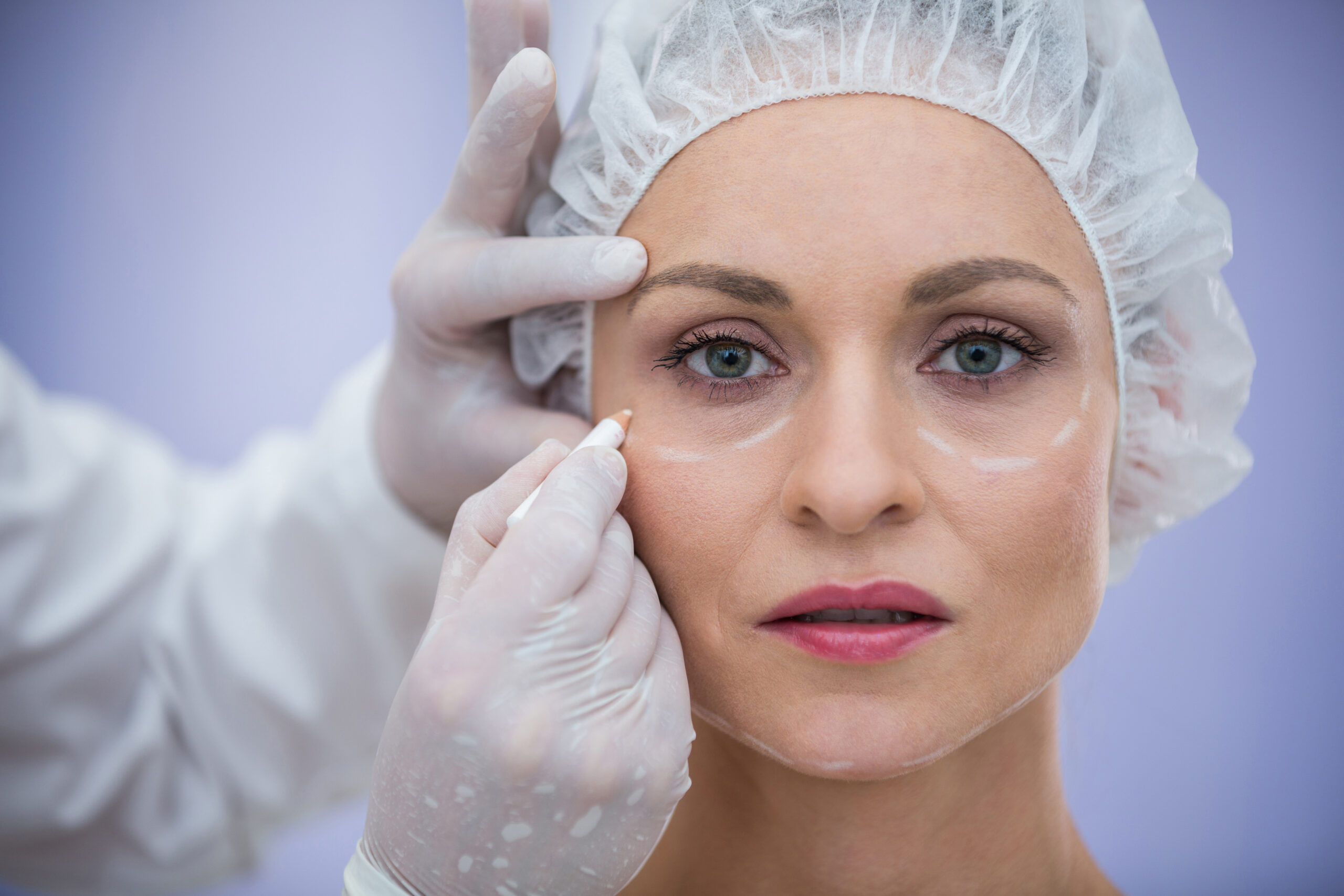 Face
Face
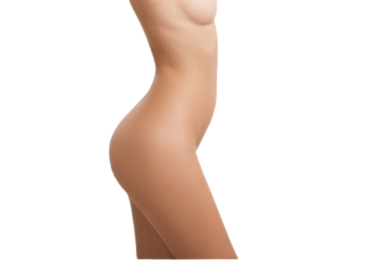 Body
Body
 Breast
Breast
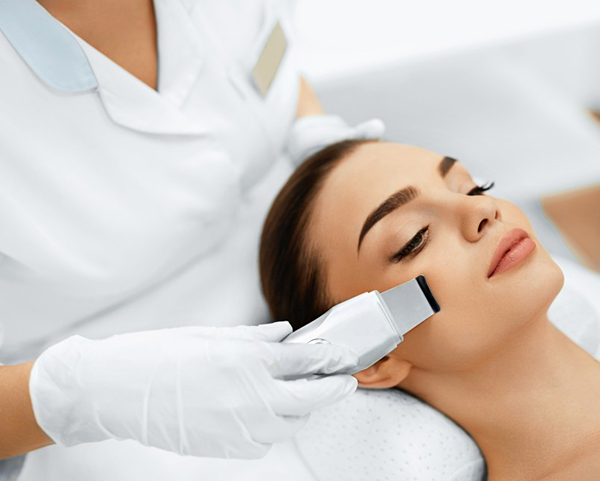 Non-Surgical
Non-Surgical
 Hair Transplants
Hair Transplants

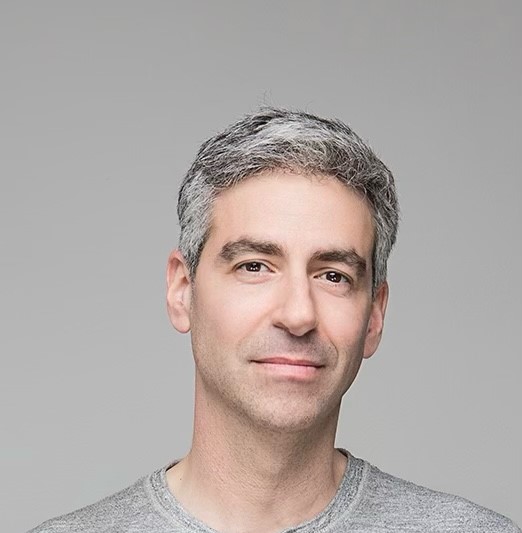 Dr. Cory S. Goldberg
Dr. Cory S. Goldberg Our Staff
Our Staff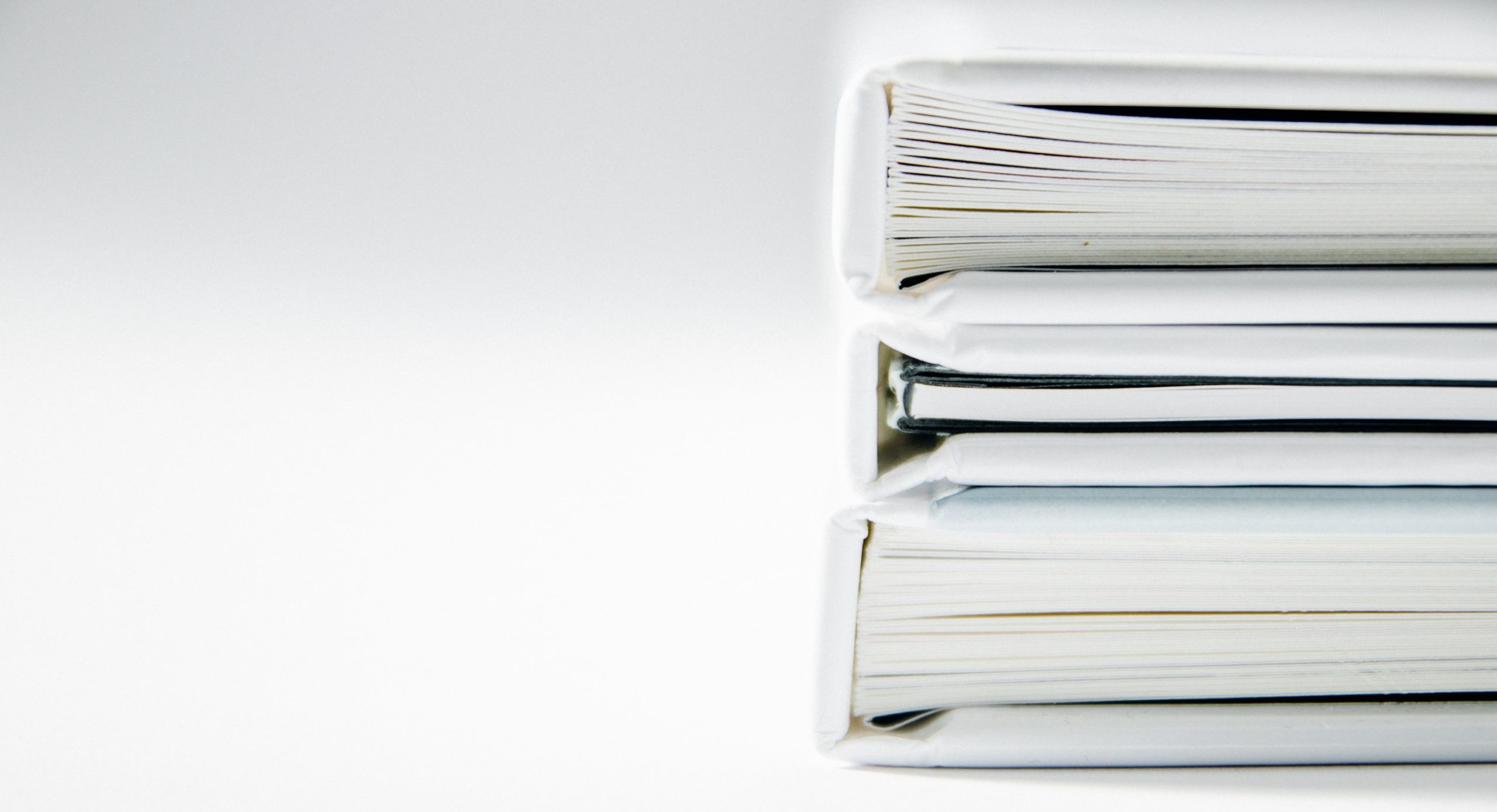 Policies
Policies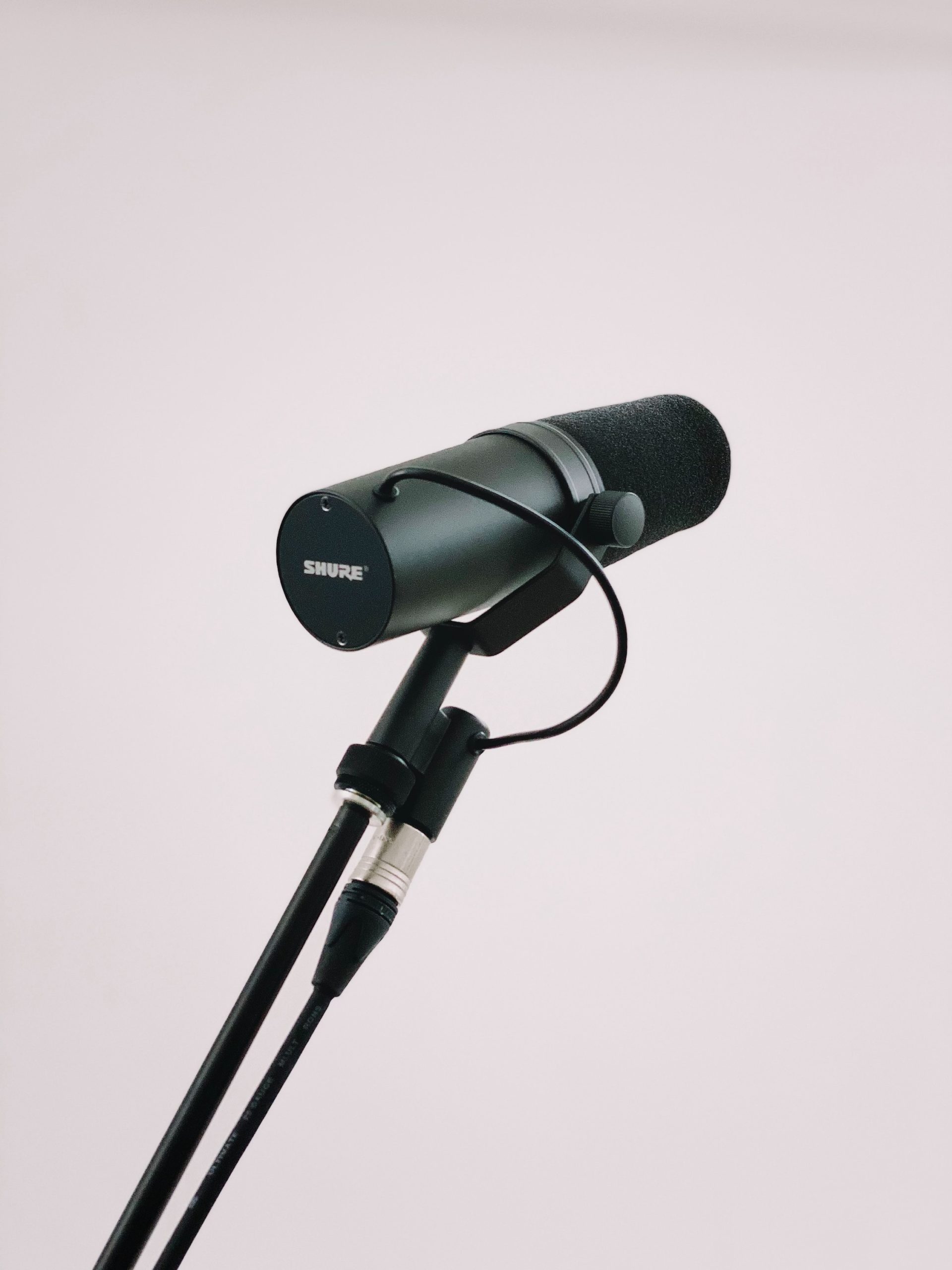 Media
Media Reviews
Reviews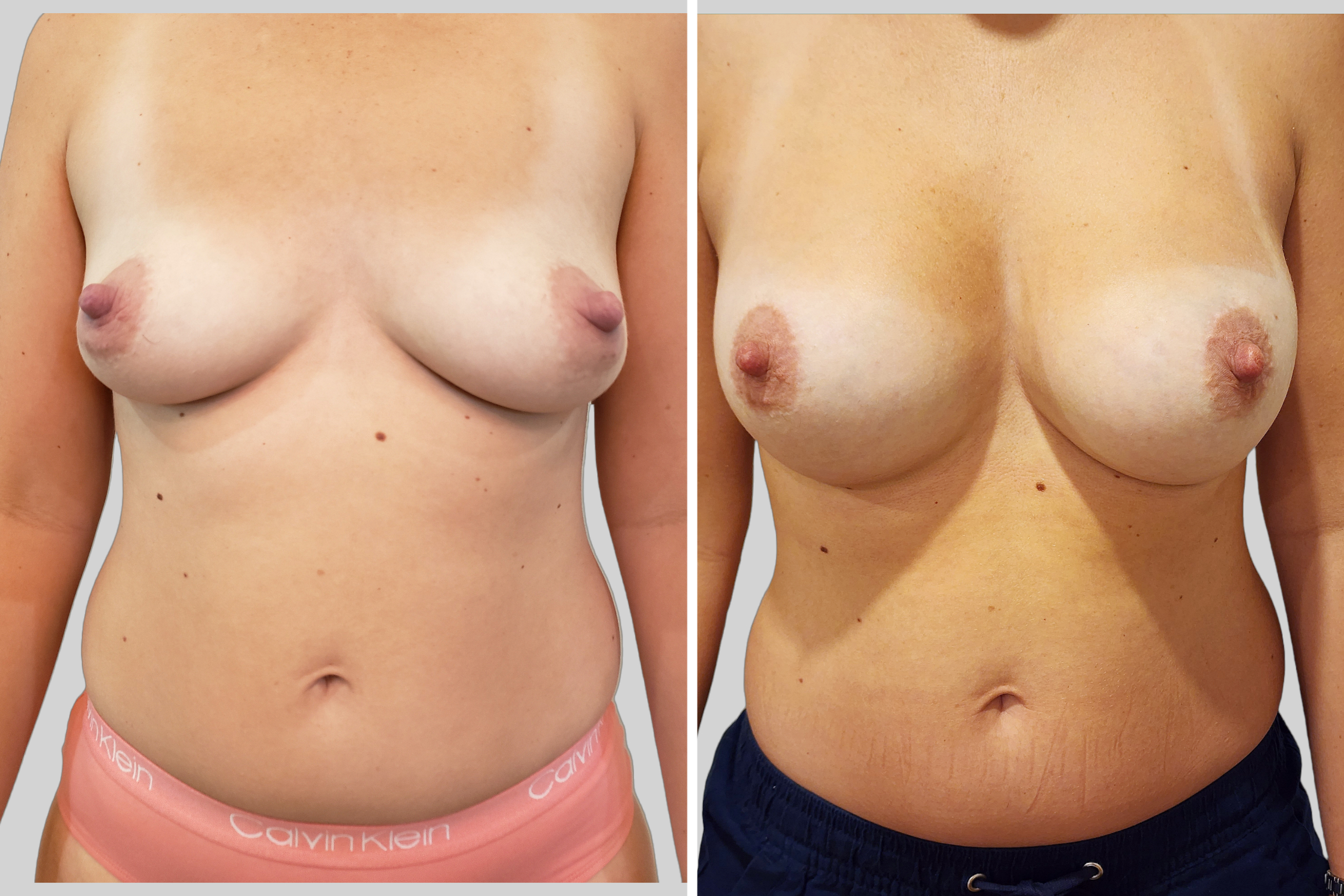 Breast Gallery
Breast Gallery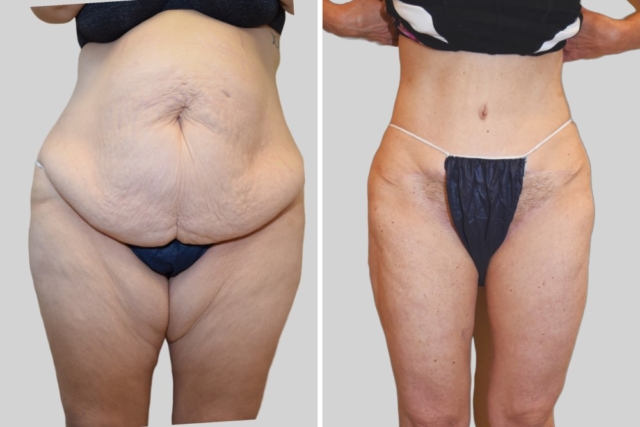 Body Gallery
Body Gallery
